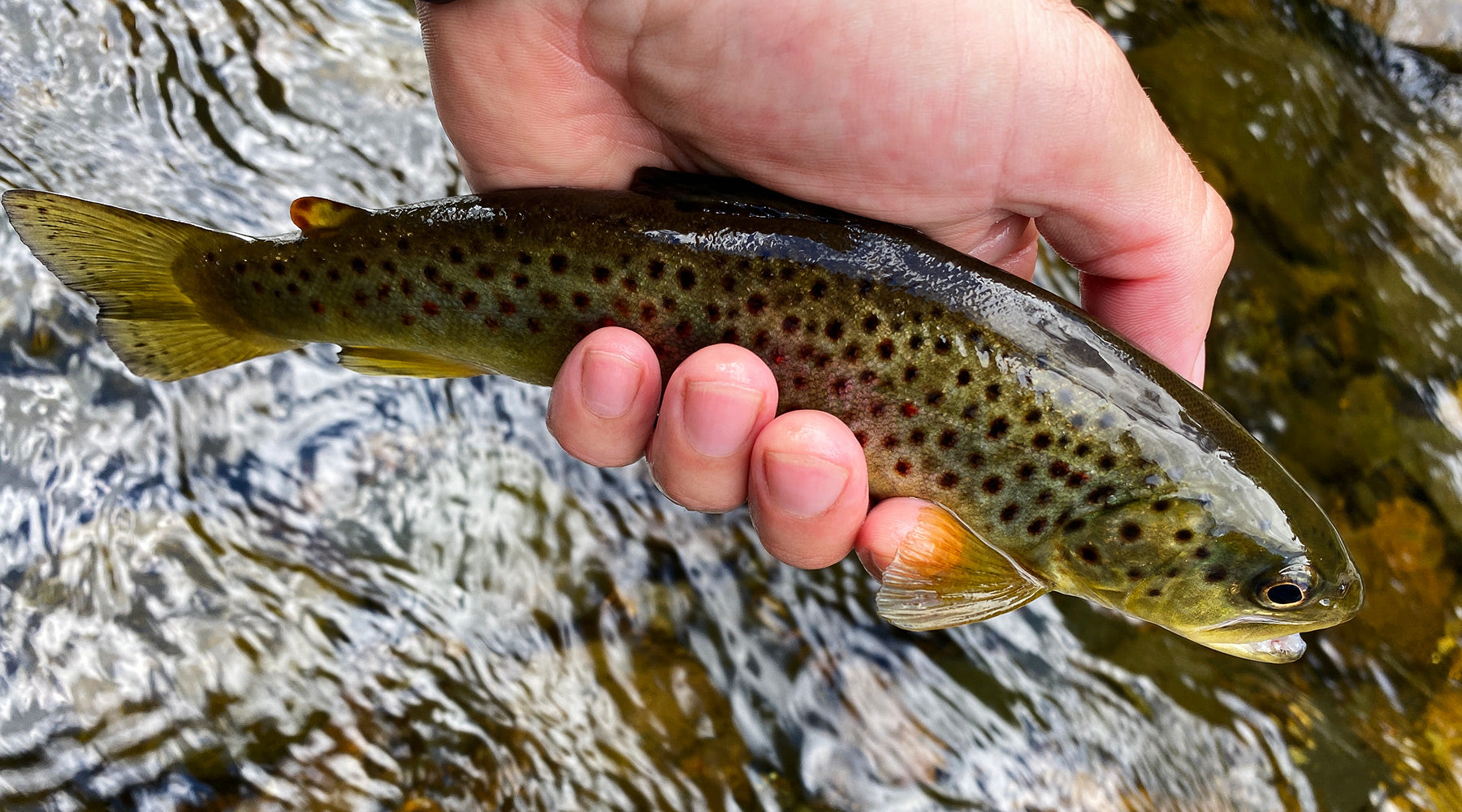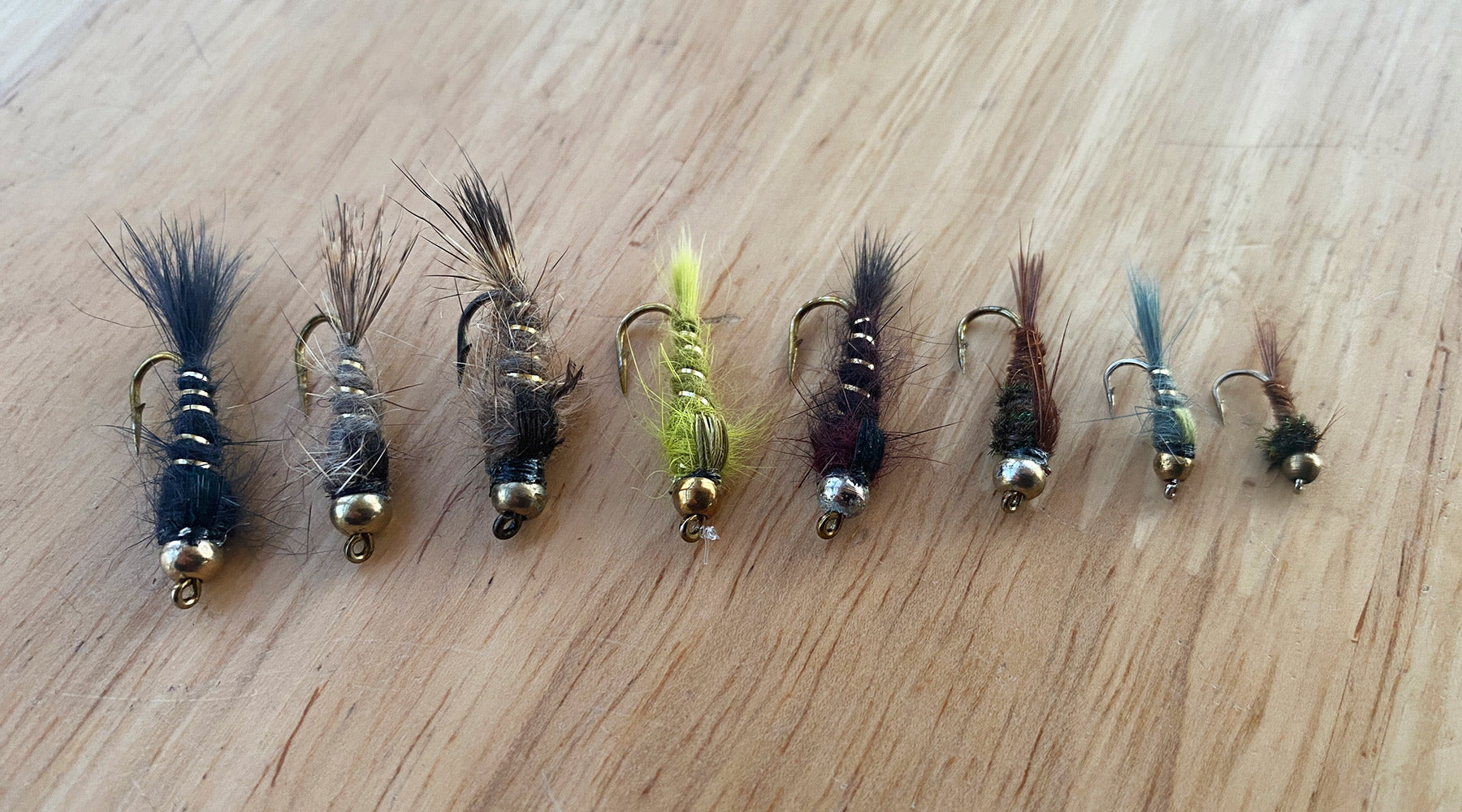Fly Fishing Hat | Dry Fly Multicam Black Camo Trucker
Orders received after December 15 will be processed starting January 6.
Orders received after December 15 will be processed starting January 6.

Early Season River Trout Fishing
April 22, 2021 7 min read
By François Nadeau, Fishing Guide
Early season river trout fishing is often difficult, if not frustrating. Since this year, to bring it up a notch, you decided to do it exclusively on the fly! At this time of year, the water is high and cold in rivers and streams, you don't see any bugs flying around and the trout may even seem uncooperative. It is however quite normal, just like you, the rivers and the fish fauna will come back to life little by little when the temperature rises. I will briefly introduce you to a few notions to help you understand the trout's environment and behaviors. I will also focus on the approaches to take and suggest some basic equipment that may help you in your quest.

Stream Geomorphology And Water Temperature
To better understand the environment, we must first look at the geomorphology of the rivers and the effect that water temperature has on fish. At the end of April here in Canada, it is not uncommon for our rivers to be twice as high as normal. This extra water comes mainly from the melting snow and its temperature hovers at around 4°C. Let’s say it’s not very comfy when we know that the preferential temperature of salvelinus fontinalis is around 14°C! The brook trout, a cold-blooded animal, sees its metabolism directly affected by the ambient temperature. It should be noted that during the long winter period, it rarely moves more than 30-40 cm to reach its food. It may even feed only once every two weeks in some cases and its meal will be a simple nymph or two.
We must therefore adapt our equipment and especially our fishing methods to successfully waive a fly directly under the nose of the desired lady. To do this, we must learn to find a suitable spot and identify the right time of day to make our fishing trips. We must also try to hide and be discrete in our movements and gestures. At the beginning of the season, fishing smoothly and relying on a nice presentation is the secret to be successful. Finally, we have to choose the right equipment and the right technique to achieve this.

Choosing A Suitable Location And The Optimal Time
Knowing that the early season trout will be more active in a comfortable ambient temperature, it is necessary to look for places or sections that will warm up quicker in a stream. You must also carefully select the type of stream. A small stream will warm up faster than a medium or a large size river for instance. I recommend a creek to start off the season and get your hands wet while waiting for the water level to drop in our beautiful big rivers.
First, look for sections with a slow water flow. Shallow water and river edges are the ideal places where you should do your first prospection. This is also where you will see the first annual insect hatches late afternoon. Keep in mind that there is a lot of sediment in suspension that will disturb water clarity. Rule of thumb: the underwater view is twice as blurred as the view from the outside. Therefore, you will need to pick flies that contrast with their surroundings to be visible to the fish.
There are quite a few theories on the prime time to fish, but if we limit ourselves to the calorific element, the ideal period would be in between 14:00 and 17:00. Should we only fish in this time frame? Certainly not! If you want to catch a fish, your fly should be in the water as often and as long as possible.

Camouflage And Discretion In Movements
Important fact, trout have just spent nearly eight months in cold waters without bipeds in their immediate environment, so we'll need to use discretion when moving around the river. Sound travels much faster in water than it does in thin air. You must avoid kicking rocks and pebbles as much as possible while walking around and be careful not to smash the bottom of the river with your walking stick. The walking stick which should always be by your side when the water is this high and rough, it's your third leg!
The aspect of visual discretion is just as important. Unlike flies, you have to blend in with the environment in the background. Trees have no leaves in the spring, so it's harder to use them for camouflage. We must wear neutral and natural colors, prioritizing beige, brown or green for example. Bright colors such as red or yellow and dark colors such as black or navy blue should be avoided at all costs. Slowing down your motion speed in and out of the water can also help you go unnoticed.

Fishing Smoothly, At The Right Depth And Offering A Nice Presentation
Unlike lake fishing, river fishing is dynamic. The water is always in motion. This must lead us to change our approach. For example, instead of casting in a clockwise pattern around the boat, on the river we try to " canalize " our casts. " Canalize " in a way that the fly moves in a rather straight line from upstream to downstream following a natural course. Imagine black lines on the bottom of the river like in an Olympic swimming pool and that you must lead your fly in between each of them to cover the entire bottom of the river. By fishing this way with nymphs, you will maximize your catch rate.
The fly must also be visible and properly presented so that the fish can easily reach it. Think about slowing down the presentation and make sure the trout has time to catch the fly as it passes by. If the water is high, it is important to get the fly to sink to the right depth as opposed to fishing with dry flies. To achieve this, use weight on the bait (weighted fly) or the leader (polyleader or split shots). It is also suggested to use a fluorocarbon tippet because it has a higher density than water and will help the flies to sink. Nymphing and streamer fishing are the two preferred methods since they are both performed underwater.

Choosing The Right Equipment And Technique
Don't worry, you probably have most of the equipment you need at hand already, you can even use a floating line. You may be missing a leader, sinker, or strike indicator, but these items are inexpensive and usually easy to find at your local fly shop. Don't hesitate to use a larger rod than recommended for trout if that's what you have at hand, you'll have an easier time casting your weighted flies. In fact, the choice of equipment will be determined by the fishing method you choose.
From a technical standpoint, I suggest 3 approaches that have worked for me in the past: streamer fishing, traditional (or suspended) nymph fishing and European nymphing.
Who hasn't tried to catch trout with a muddler or a wooly bugger on their first trip? Streamer fishing requires very little equipment, which is why it is so popular. At the beginning of the season, however, it is important to adapt a little. The addition of a sinking leader or polyleader, or the use of a weighted fly, will allow you to reach the desired depth. Simply cast from 90° to 45°, let the fly settle, and then gently retrieve it. This method is very effective for large specimens. Don't forget to slightly reduce the size of your streamers for the first few trips. Choice of flies: the André A, the Mickey Finn, the Muddler and the weighted Wooly Bugger.

As a second technique, suspended nymph fishing is without a doubt one of the most effective and easiest methods to learn. We can get started by tying two flies and a bobber (or strike indicator) on our leader. Simply put the two flies about 40 cm apart on the leader. The first one, the tip fly, will allow the rig to reach for the bottom. Then the dropper fly, higher on the leader, is a smaller and lighter nymph that will swim naturally. We finally add a striking indicator whose distance to the rig will vary according to the depth of the stream. To begin with, place the indicator at about one and a half times the depth of the water. When the fish bites, the bobber will suddenly stop, so you have to lift the rod tip slightly. With a little practice, you'll become a nymphing master! Choice of flies: the Beadhead Stonefly, the Beadhead Red Fox Squirrel, the Pheasant Tail and the North Country Spider.

The last method is the most difficult to control technically, but it's the most rewarding. You can begin with a standard rod and an improvised leader, but a specialized nymphing rod is recommended to reach your full potential. Reminding us of the French methods of ¨pêche au fil¨ (mono fishing) or “toc” fishing, the European nymphing is built around the principle that after casting the flies upstream, we let the flies go down naturally in the current near the bottom by gently guiding them while maintaining a direct contact with the fly line. The weight of the flies allows to keep a tension on the leader. A specialized nymphing rod that measures in between 10' and 11' in length will give us more reach for sure. Unlike conventional rods, the nymphing rod tends to have a medium flex with a softer tip. This allows fishing with very thin leaders without breaking them when fighting the fish. Choice of flies: Pheasant Tail variant, the El Secreto, the Rainbow Warrior and the Sexy Walt’s.

To summarize, you shouldn’t be afraid to go out on the opening day but you should be well prepared because the conditions are not always easy. Be very careful when moving around because the water level is high and the water itself is freezing cold. Wear appropriate clothing and use a walking stick. A life jacket could also save your life.
Get your equipment ready in advance so you are ready when get to the river. Once you make it there, do everything you can to get the fly to the right depth and be on the lookout for an area that looks productive.
Nymphing might not seem as fun as dry fly fishing, but when you’ll get used to it, you might even switch for good. Try the different suggested techniques to figure out which one suits you best. Going out when the fishing is difficult will definitely make you a better fisherman that will adapt to all water conditions in the future. On that note, I wish you an excellent season starter and success in catching your first trout on the fly.
Written by: François Nadeau, Fishing Guide
Subscribe
Sign up to get the latest on sales, new releases and more …

